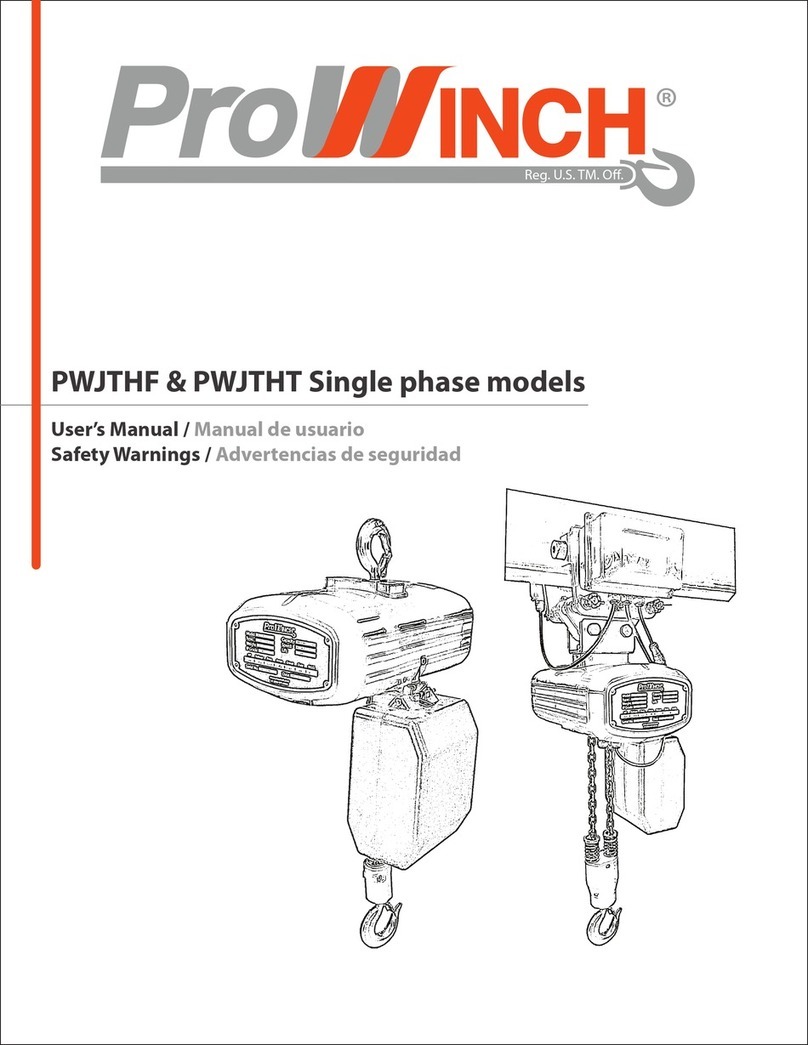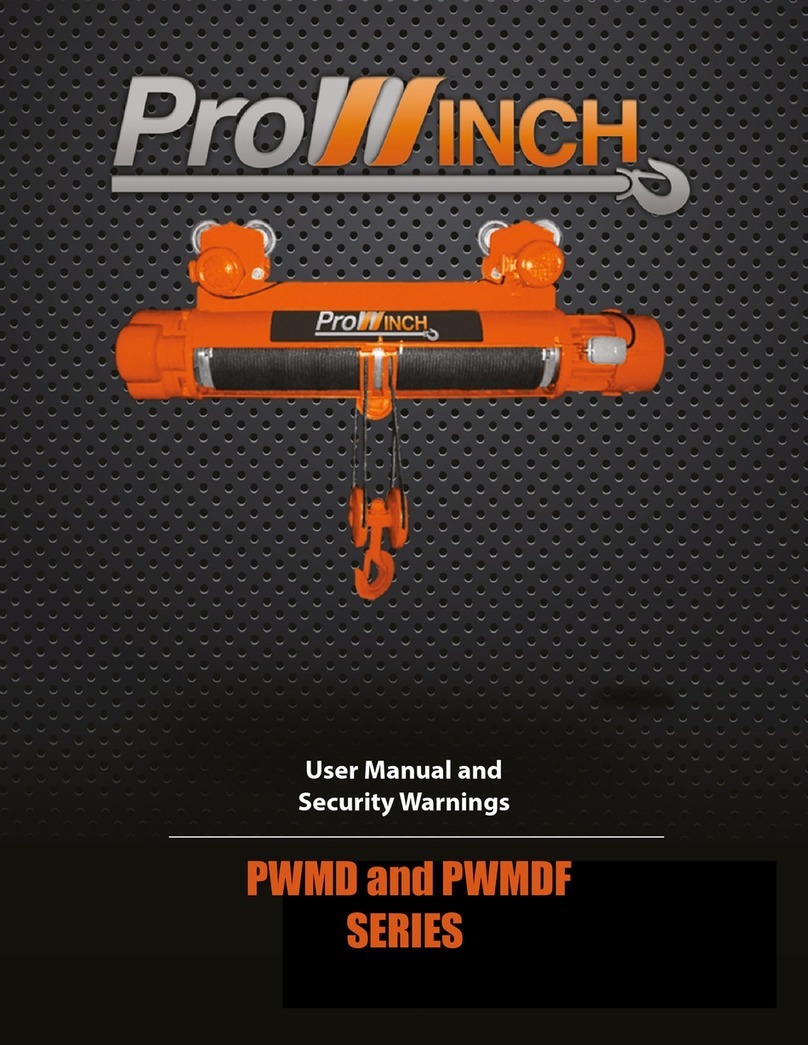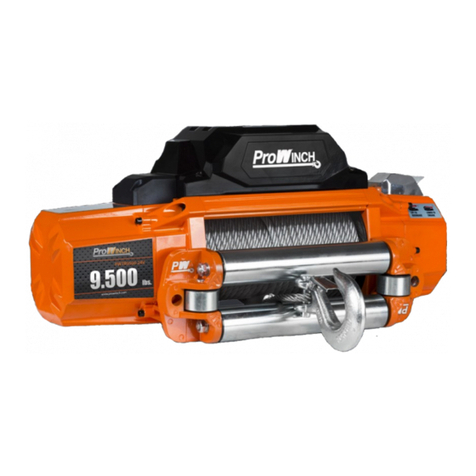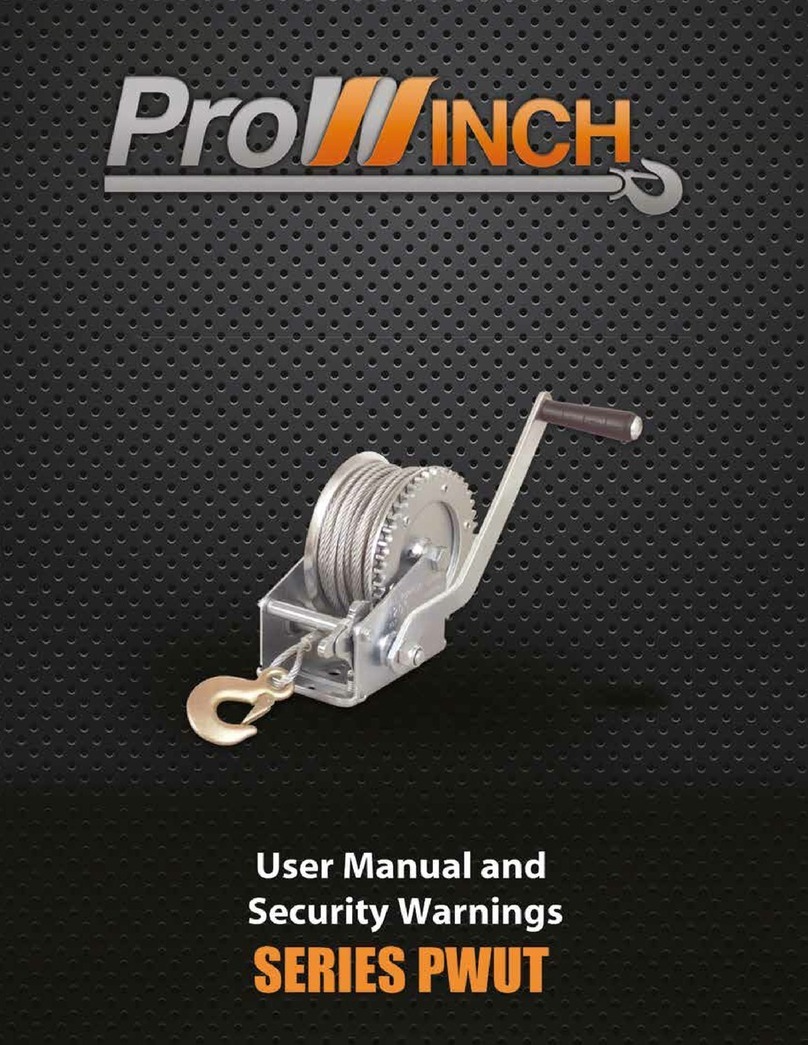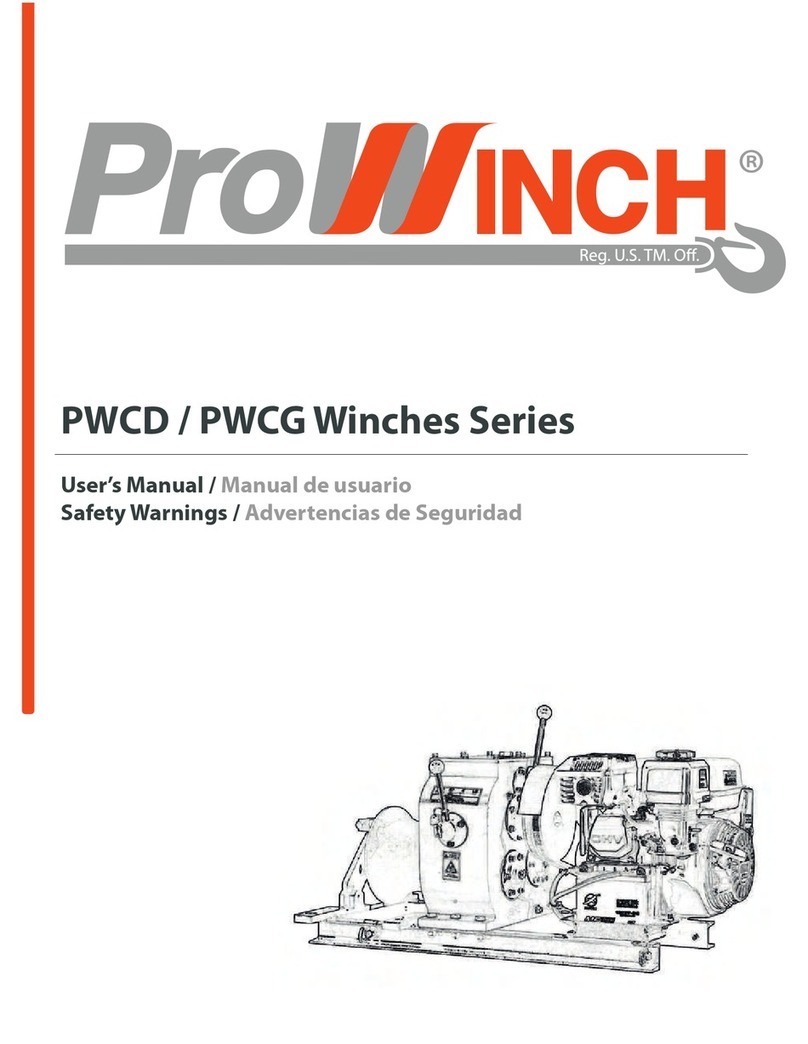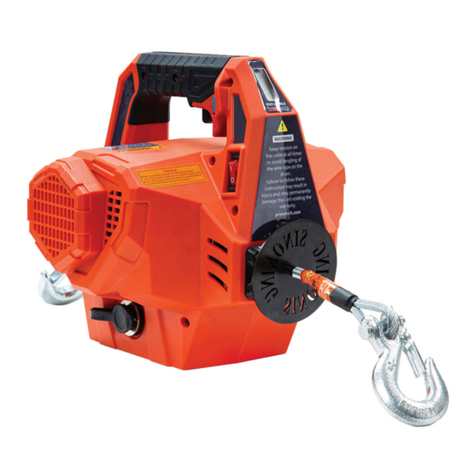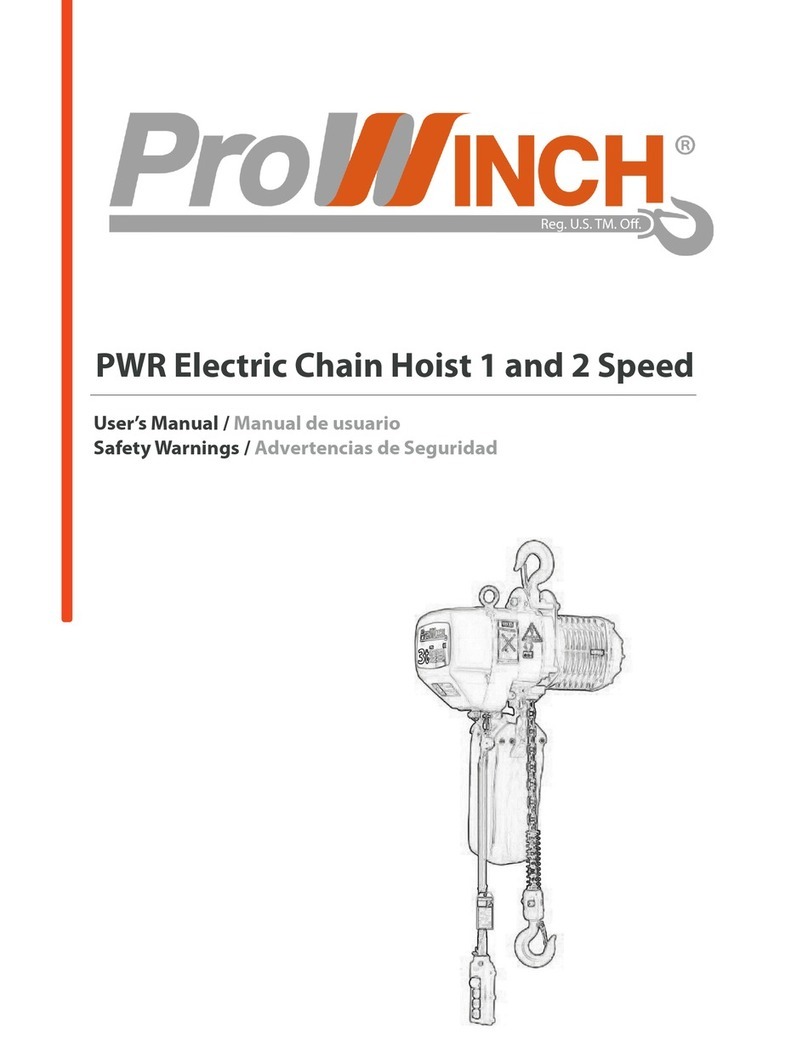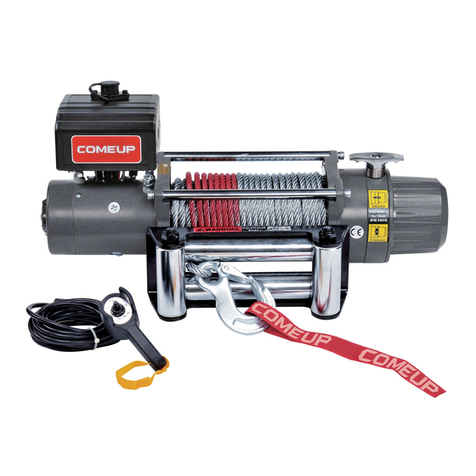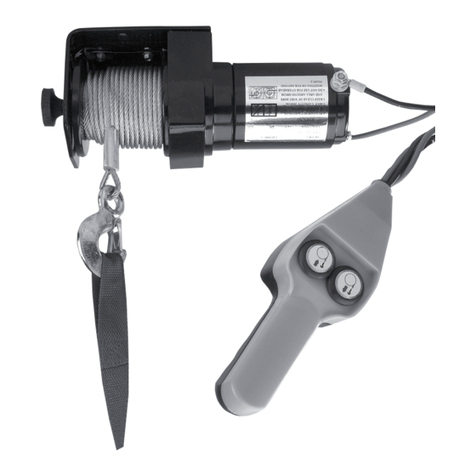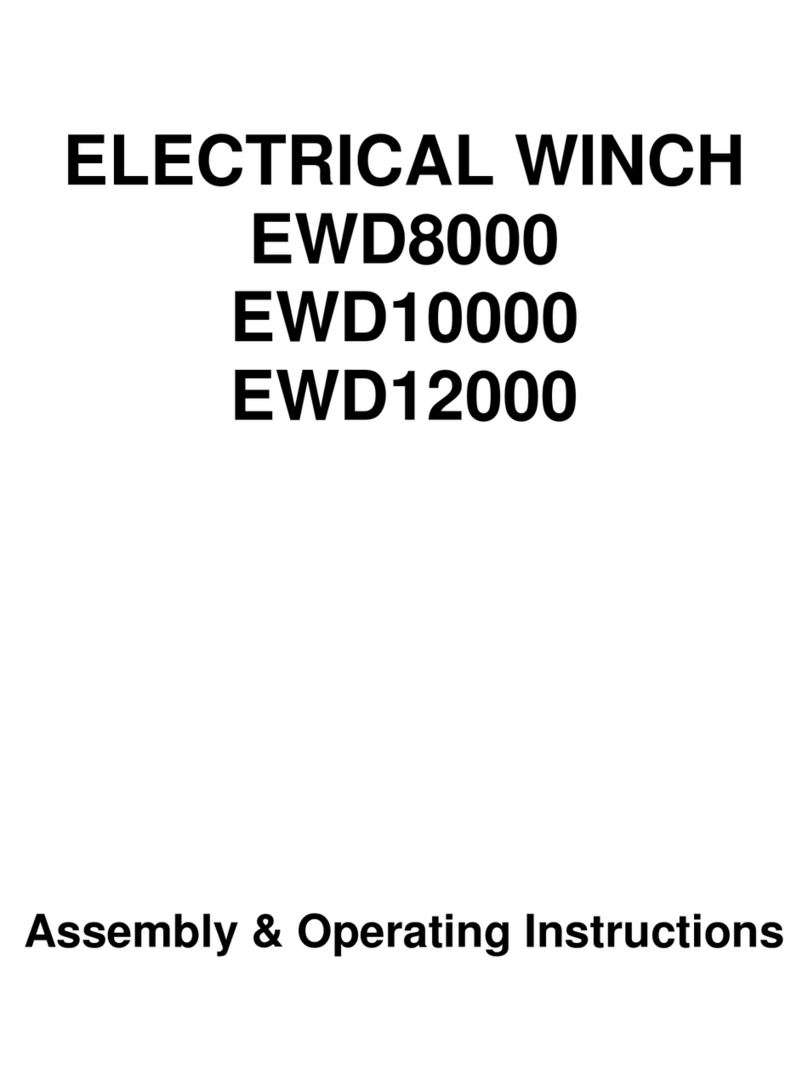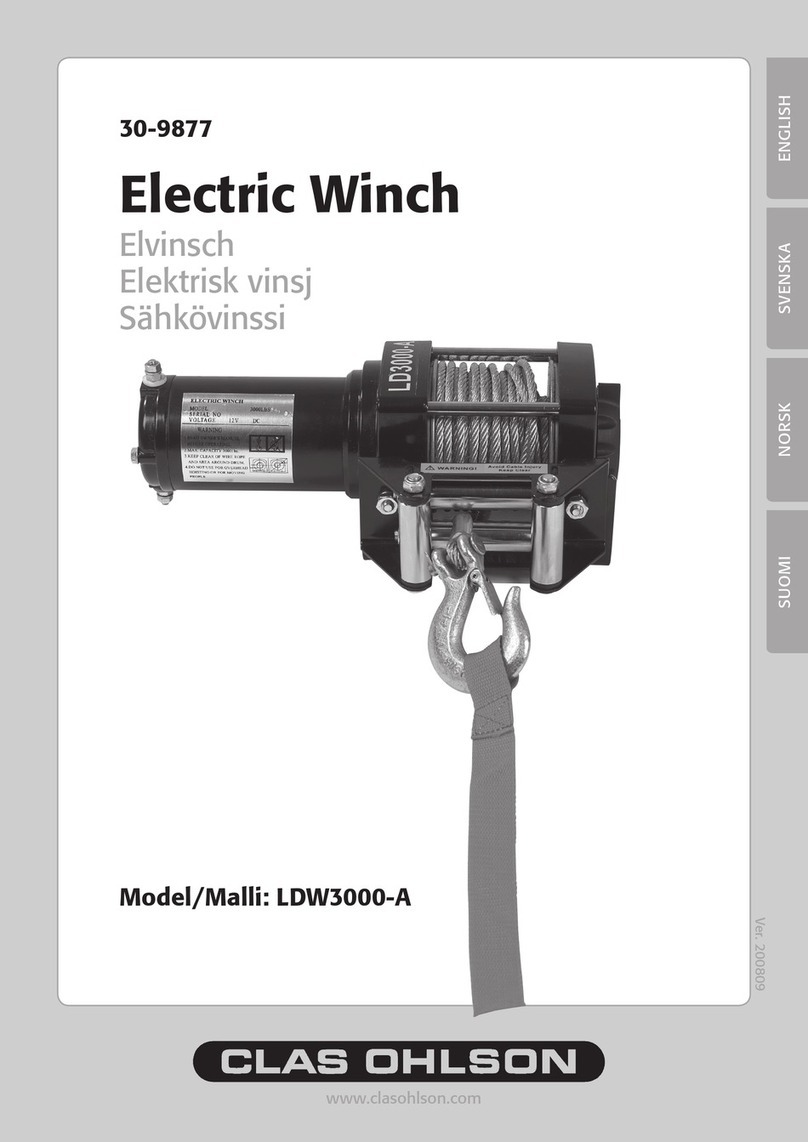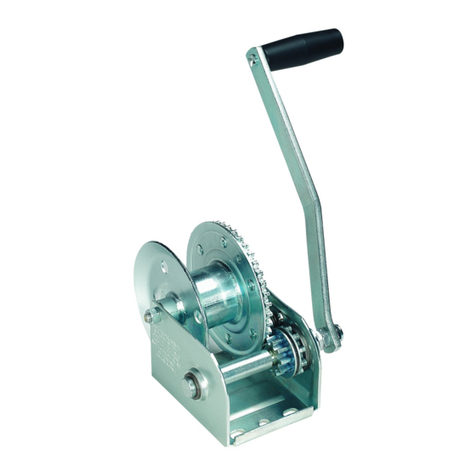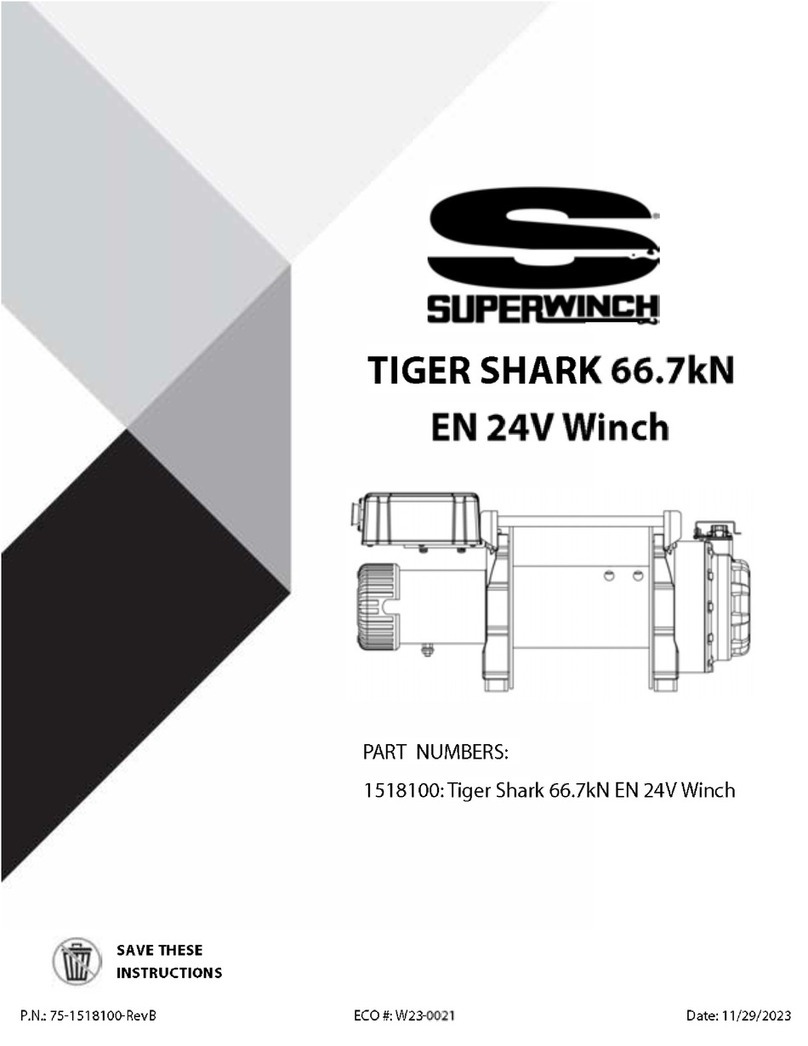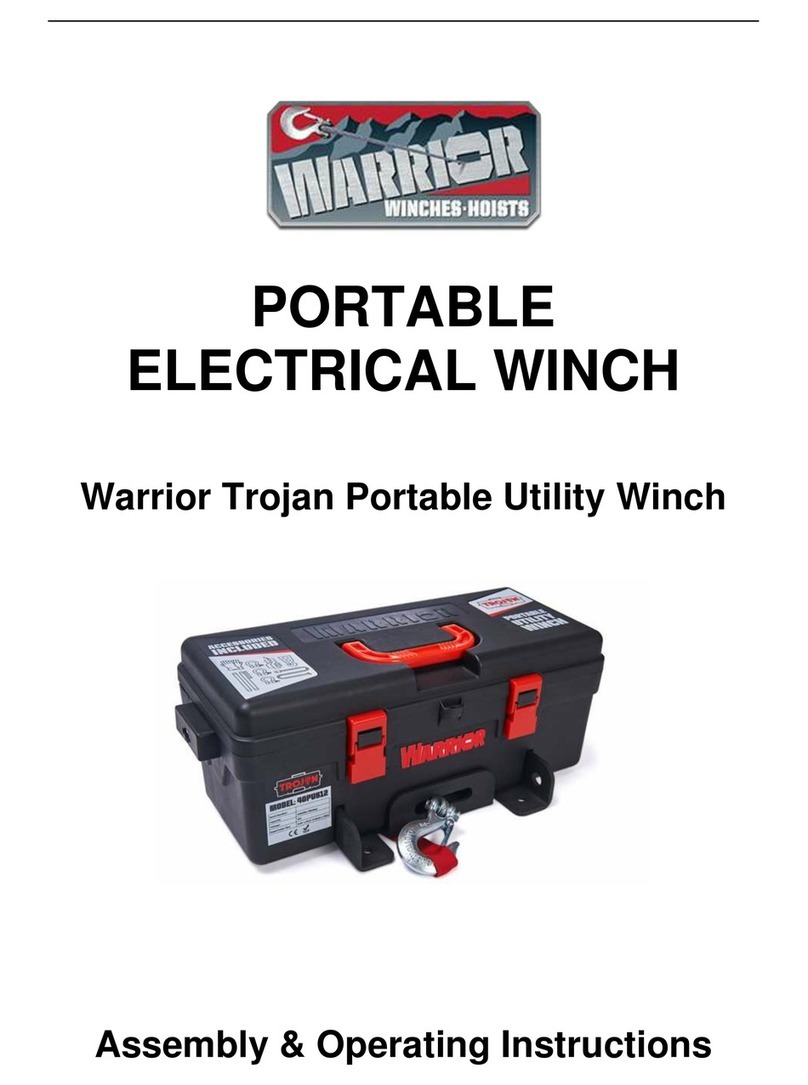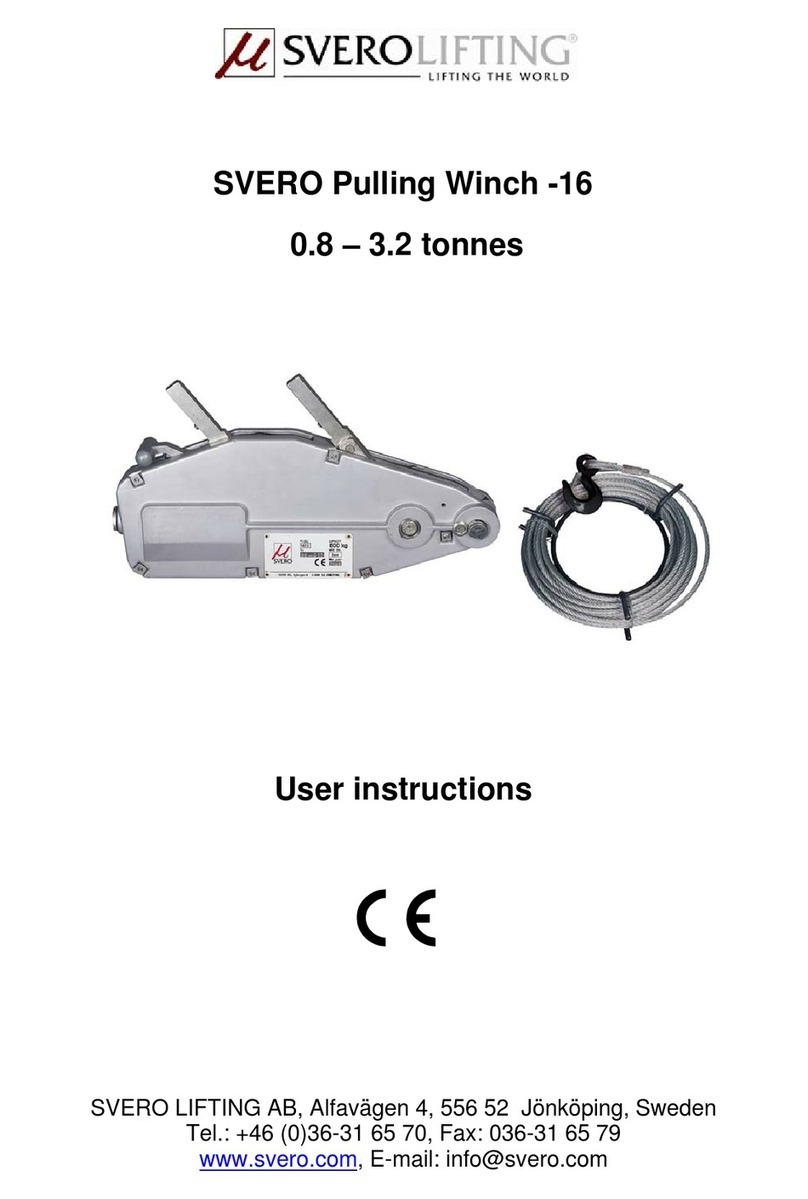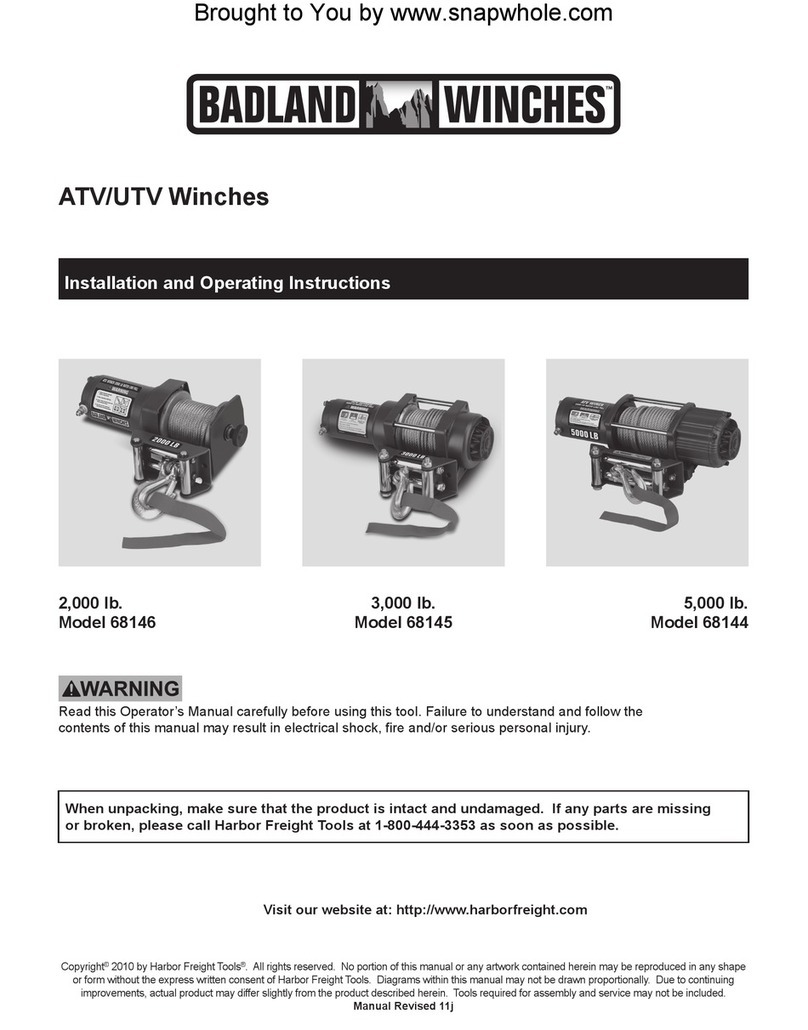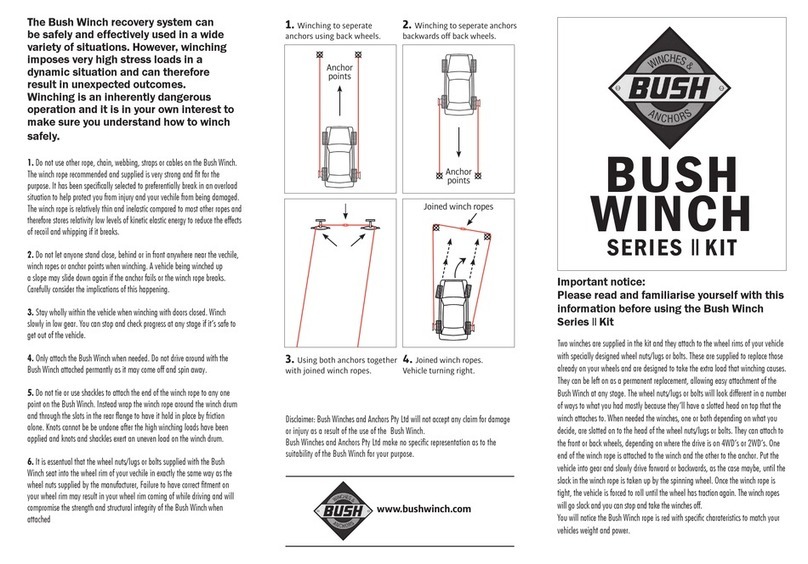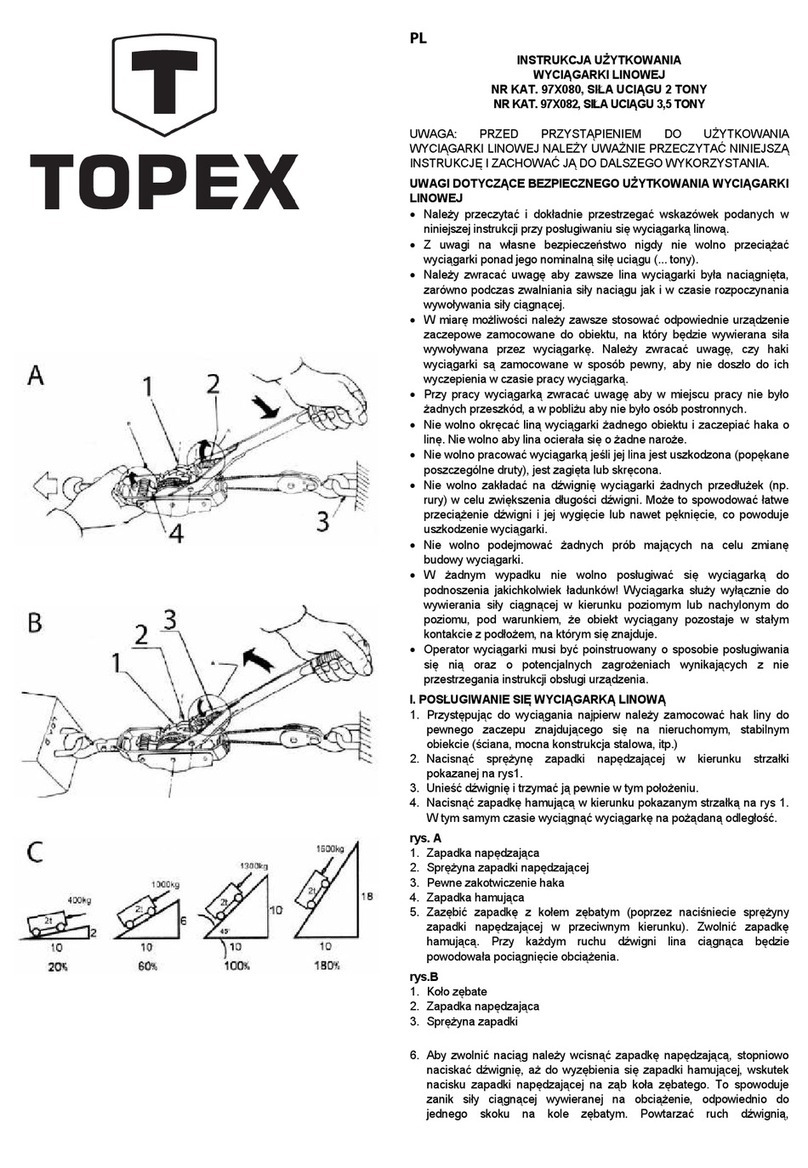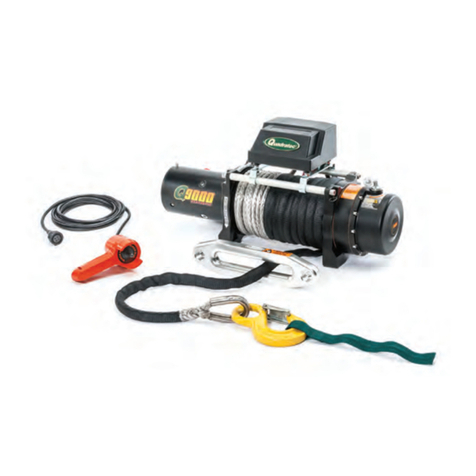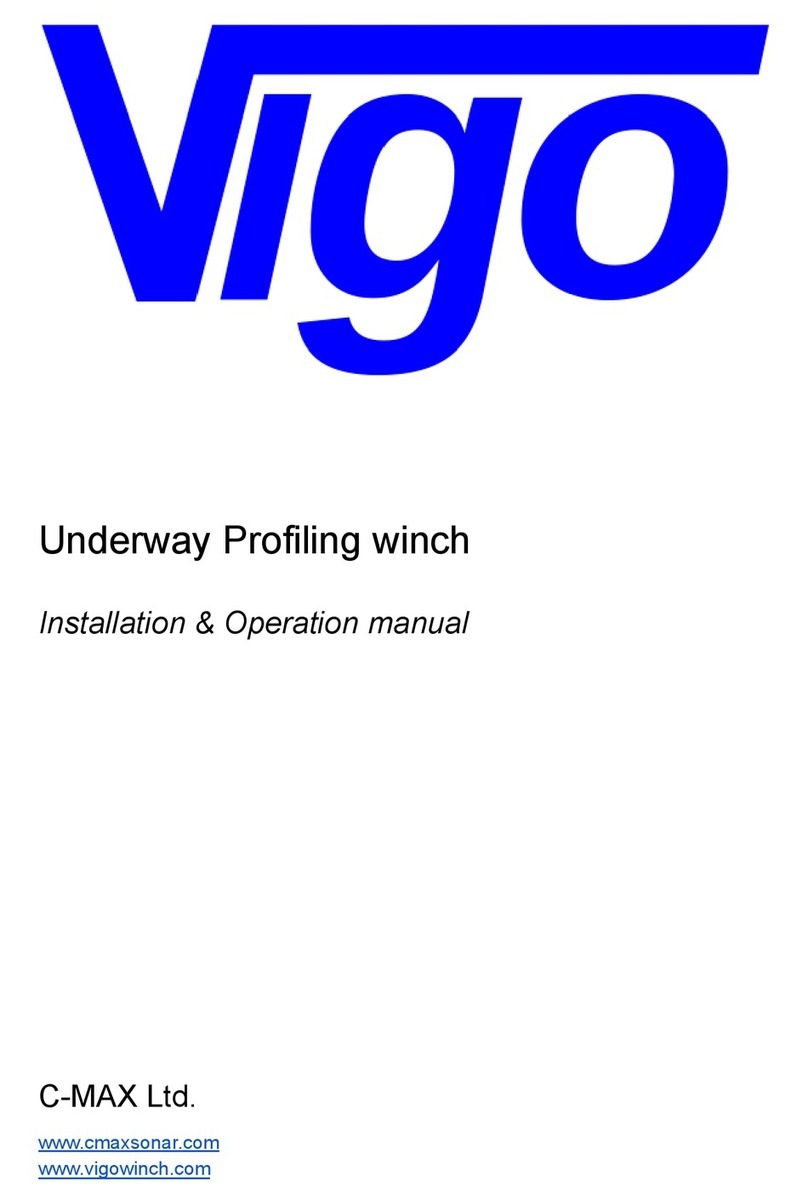
7
2.1. Handling Precautions:
- Keep the winch in best conditions. Failure to adequately
align, support, or attach winch to a suitable mounting
base could result in a loss of efciency or premature failure
of the winch, wire rope, or mounting base.
- Do not use any chain or wire rope that was not designed
for the unit you are using.
- To avoid an electrical discharge, make sure that your
equipment is adequately grounded, by certied personnel.
- Make sure the winch works properly without load , before
applying loads.
- Do not lift weights with the edge of the hook.
- Do not perform lifting with more than one winch at once.
- Never exceed the maximum weight lifting capacity.
- Disconnect the equipment from the power supply in order
to avoid any involuntary use.
- Do not use pulleys or accessories that are not approved
for this winch.
2.2. Wear appropriate protective clothing:
- Do not use loose clothing or any jewellery when operating
this equipment.
- You must wear protective leather gloves when handling
the winch rope.
- You must wear non-slippery safety footwear,safety helmet.
- Long hair must be tied back to operating this equipment.
- You must wear appropriate safety glasses to operate this
equipment.
2.3. Keep a safe distance:
- Always stand clear, keep hands clear, keep others away at
least 1.5 times the lenght of the wich rope. Wire rope can
break without warning.
- Never touch the rope or hook while they are in tension
or under load. Even at rest, the winch may have the rope
in tension. Never guide a rope under tension onto the
drum with your hands.
2.4. Power cord misuse:
- Do not lift the winch or any equipment from the power cord.
- Never route electrical wire ropes across sharp edges.
- Never route electrical wire ropes near parts that get hot.
- Never route electrical wire ropes through or near moving parts.
- Never route electrical wire ropes over battery terminals.
- Always insulate and protect all exposed wiring and
electrical terminals.
2.5. Do not overwork the equipment:
- If the motor overheats, stop any operations let the winch
cold, check for any damage before restart operation.
- If the winch stops during its operation, stop and check for
any damage before restart operation.
- Do not exceed maximum rated capacity.
2.6. Check for damaged parts:
- Before using this equipment, check for any visual damage
in the motor or wire rope.
2.7. Winch repair:
- In order to repair a Prowinch® winch, use only original
Prowinch® parts. Using unauthorized parts will void
warranty.
2.8. Winding the winch wire rope:
- You must wear leather gloves to handling the winch rope.
To proceed properly you need to apply and maintain a
small load on the rope. While the operator winds the rope
someone else should lead to correct location. Start as far
as possible keeping it centered.
- Do not let the winch rope falls off and always keep a safe
distance from the winch.
- Repeat this process until one (1) meter of wire rope was
been left unwind.
- Disconnect the remote or/and from the power source.
- The last ve wraps of wire rope must be left on the drum
to assist the wire rope clamp in holding the load.
General Safety
Instructions
